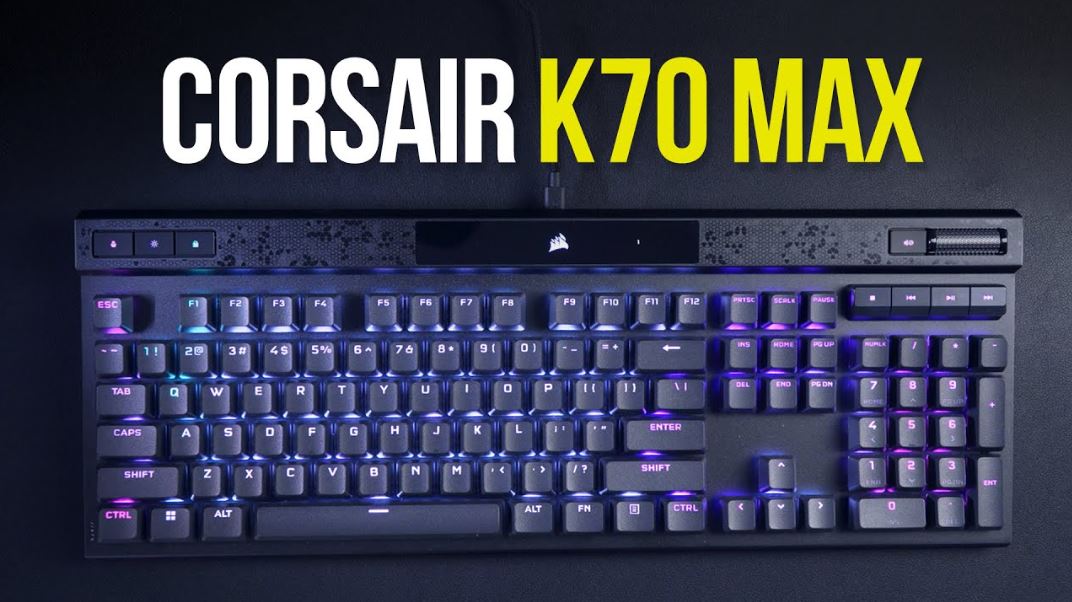After a successful K70 RGB Pro, Corsair doesn’t stop there and now offers a Max version of the K70 (K70 Max). It offers a much more comfortable wrist rest, but above all, entirely customizable magnetic switches.
Corsair’s K70 Max complements an already extensive K70 family and stands even higher in the range than the K70 RGB Pro. While it almost retains the same design, this time it features improved comfort with a new palm rest, but more importantly, competition-grade magnetic switches with adjustable actuation height. K70 is priced at $159; the K70 Max, however, is priced at $229, a significant price tag, albeit not reaching the heights of the $279 K100 Air. At this price point, one can only hope that this mechanical keyboard ticks all the boxes, and we’ll check it out right away…
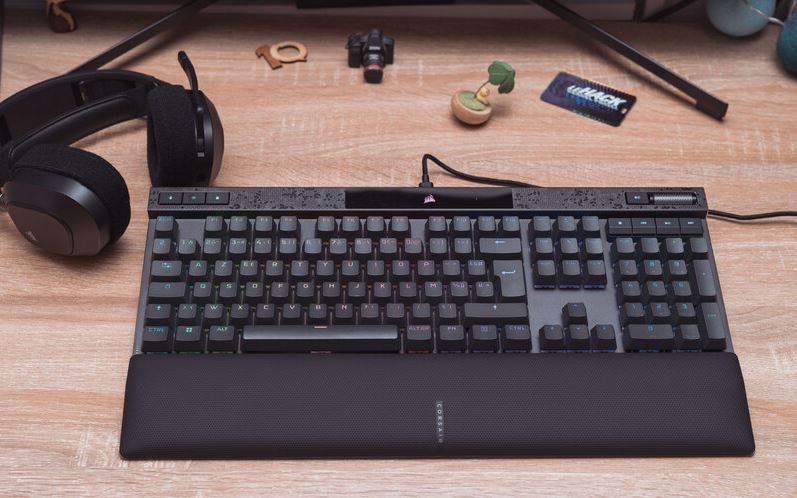
Please follow us on Twitter and Facebook
Ergonomics of Corsair’s K70 Max
No surprises in terms of design as we find the same structure and layout as the K70 RGB Pro. The chassis is still covered with an aluminum plate to reinforce overall rigidity, although this time it’s anodized. Its dimensions of 44 x 16 cm (without the palm rest) remain the same, but it is, however, heavier and approaches 2 kg on the scale. Not really a problem since this type of full-size, wired keyboard isn’t really meant to be transported every day. Once again, there’s a magnetic wrist rest, but different from the Pro version: Corsair has gone all out with a textured memory foam. Hard to do better in terms of comfort and everyday ease of use.
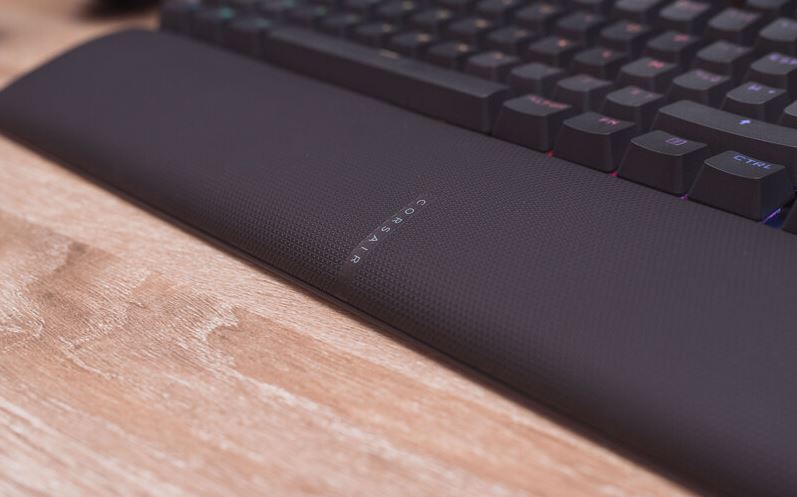
Otherwise, we find the same features as the K70 Pro, with the illuminated screen at the top of the keyboard displaying the active elements (Caps Lock, gaming mode, etc.), profile and brightness management keys in the left corner, and dedicated multimedia keys in the upper right corner. These are handy keys accompanied by a metal dial for volume control, which proves to be useful and well-built.
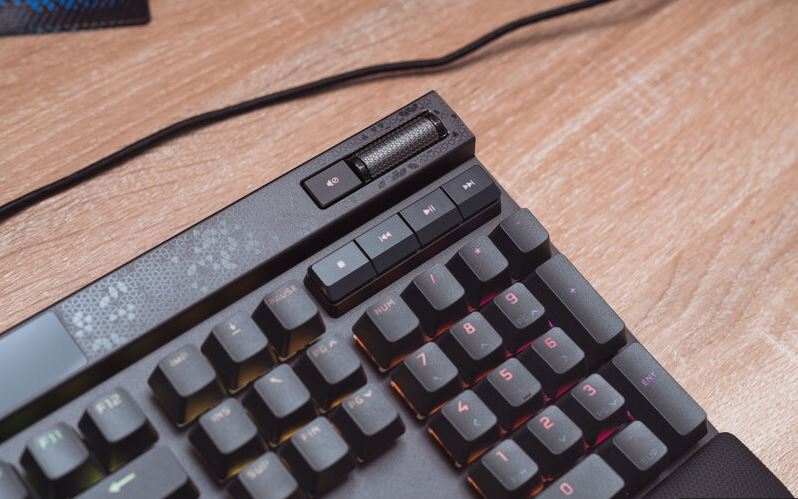
No complaints about the finish; we are clearly dealing with a high-end keyboard, and the keys are obviously double-injection PBT, a higher-quality plastic than the classic ABS, which tends to wear out over time. Overall, we find once again all the characteristics of the K70 Pro, with a detachable braided USB-C to USB-A cable and the “tournament” button on the front edge that deactivates macros and leaves static lighting. This feature seems very situational to us, and the general public is not likely to use it, but… it exists.
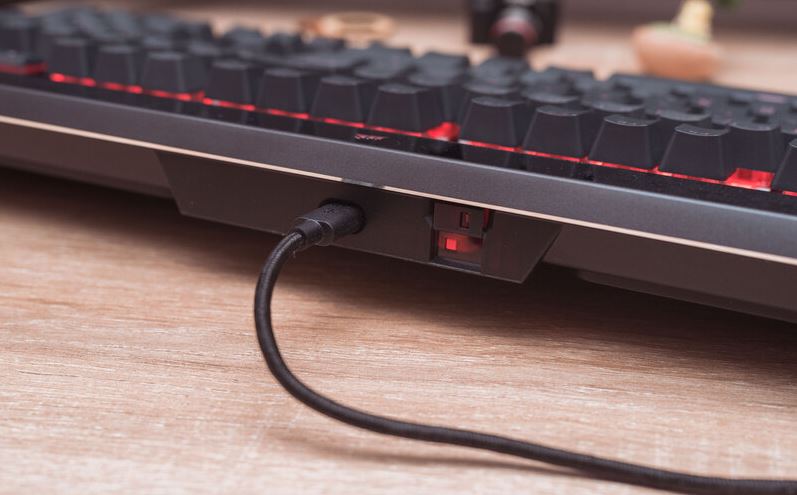
Under the keyboard, we find familiar features: feet that allow the K70 Max to be raised in two levels, non-slip pads are of course present, and the braided cable can be slid into channels to prevent it from dragging on the desk. Obviously, we would have preferred a wireless model, but the technology of the switches used does not allow it yet.
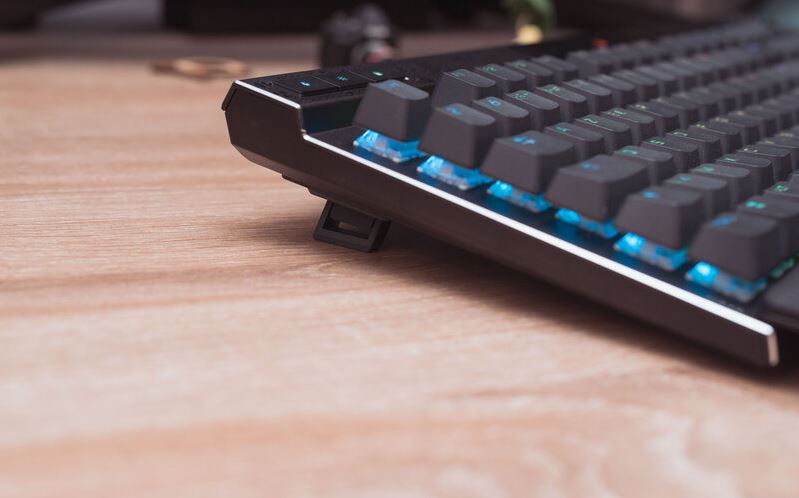
Finally, all function keys are customizable in the iCue proprietary software, and their backlighting is very comprehensive. We can thus adjust the lighting effects key by key, assign shortcuts and macros as needed, and above all, manage the actuation height of the switches, a big new feature of this model.
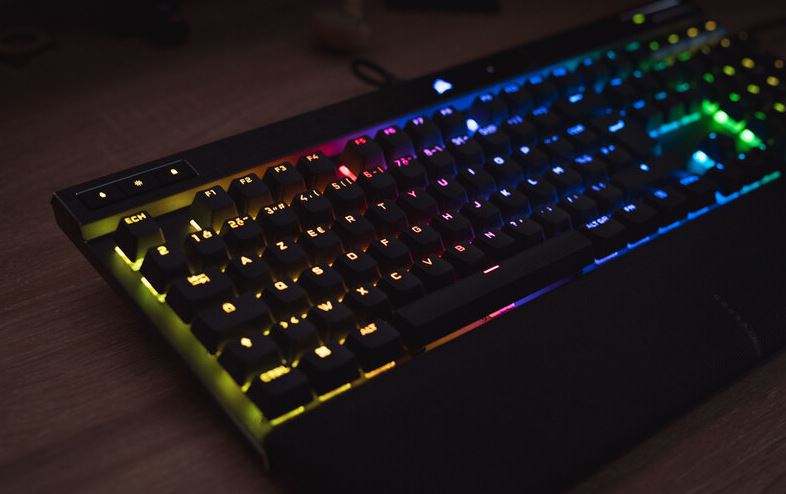
Typing Experience
Indeed, the K70 Max no longer features linear, tactile, or clicky mechanical switches, but magnetic switches — here, new Corsair MGX switches — sometimes referred to as “analog.” This is the first Corsair keyboard equipped with this type of switch, but this type of switch is not new, as they were already found on some Razer Huntsman and the Steelseries Apex Pro Mini.
Read Also: Razer DeathAdder V3 Pro Review: Razer’s Most Ergonomic Ultralight Mouse
As a reminder, normally, each type of switch has its own actuation height (2 mm for Cherry MX Red, for example, or 1.2 mm for Speed), but with analog or magnetic switches, one can choose the actuation point of the key precisely, here between 0.4 and 3.6 mm. Perfect for adapting typing characteristics to individual preferences or for changing the height depending on usage: 2 to 3 mm for work to avoid typing errors, for example, and 1.2 mm for gaming for very responsive keys.
Another feature is added to this, as one can also set two actions for the same key. The first action will be triggered halfway, and the second when reaching the end of the stroke. This can be useful in games for walking then running, or crouching then going prone, for example. In any case, the typing quality is exemplary, and everyone can adjust the settings to their liking. For your information, the feel remains linear, and fans of “clicky” or “tactile” keyboards will have to look elsewhere. A keycap puller is also provided, as well as a “Space” key and a “Corsair” key to customize the keyboard — very slightly, you’ll agree.
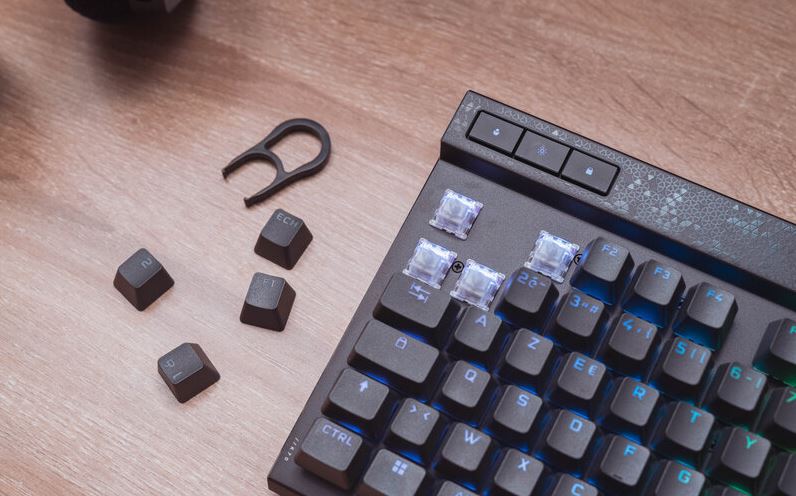
A small detail to note, Corsair’s Axion technology allows the keyboard to reach a polling rate of 8000 Hz, compared to the usual 1000 Hz. A marketing battle of figures that isn’t very interesting in practice, as the difference is hardly noticeable.
Lastly, Corsair has attempted to address one of the major issues with its previous keyboards, which suffered from significant resonance when typing on the keys. With the K70 Max, the noise is reduced, but some keys are still noisy, and you can clearly hear the springs on certain letters and the space bar. There’s some improvement, but it’s not perfect yet; a pity for such a high-end keyboard.
Read Also: Review of the Razer Viper V2 Pro Gaming Mouse: Lightness at its Peak
Pros and Cons Of Corsair’s K70 Max
Pros
- Meticulous finishes.
- Adjustable-height magnetic switches.
- Extremely comfortable wrist rest.
- Key-by-key backlighting.
- Double-shot PBT keys.
- Dedicated multimedia keys.
Cons
- Some keys still noisy.
- Keyboard only wired (but not a major issue).
Corsair’s K70 Max Review Conclusion
With the K70 Max, Corsair goes even further than with its K70 Pro and delivers an almost perfect keyboard. Everything is there for a top-notch gaming experience: PBT keys, complete backlighting, comfortable wrist rest, and above all, switches with adjustable actuation height for extensive customization of typing. One small drawback, however: while the resonance of the chassis of previous models has been attenuated, it is still audible in some places.
Read Also:
Razer Wolverine V2 Pro: Wireless controller for PlayStation 5 and PC

